What is Gluten-Free Coffee for Celiacs?
Introduction to Gluten-free Coffee & Celiac Disease
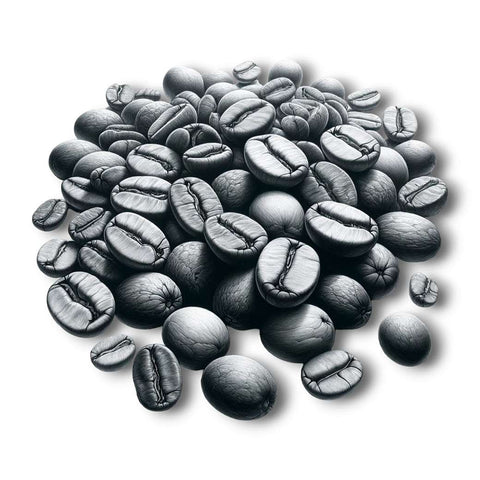
Are you a coffee lover who also happens to have celiac disease? If so, you've come to the right place. In this ultimate guide to gluten-free coffee, we'll show you how to satisfy your caffeine cravings without compromising your health.
For those with celiac disease, consuming gluten can trigger a range of unpleasant symptoms, including digestive issues and fatigue. So, it's crucial to ensure that every aspect of your diet is gluten-free – including your beloved cup of joe.
In this comprehensive guide, we'll cover everything you need to know about gluten-free coffee. We'll explore the potential sources of gluten in coffee and reveal some surprising ingredients to be aware of. We'll also dive into the world of gluten-free coffee alternatives, from certified gluten-free brands to DIY options.
Whether you prefer a classic cup of black coffee, a frothy latte, or a refreshing iced brew, this guide has got you covered. Get ready to learn all the tips, tricks, and recommendations to enjoy your favorite caffeinated beverages without compromising your gluten-free lifestyle. So, let's brew up some knowledge and sip our way to gluten-free satisfaction!
Understanding Celiac Disease and Gluten Intolerance

Celiac disease is an autoimmune disorder that affects the small intestine, impacting approximately 1% (or 1 in every 100 individuals) of the global population according to the Celiac Disease Foundation [1]. When individuals with celiac disease consume gluten, their immune system attacks the lining of the small intestine, resulting in damage and various symptoms. Gluten is a protein found in wheat, barley, and rye, and it can be present in many processed foods and beverages, including some coffees.
What is Gluten and Why is it a Concern for Celiac Disease?
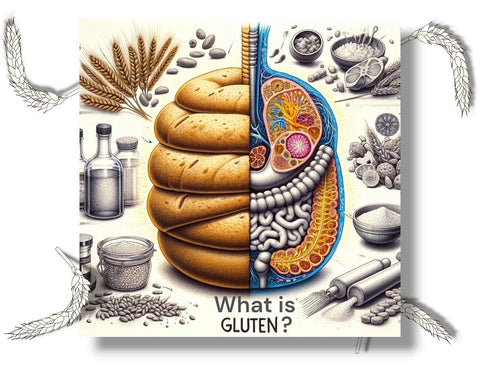
Gluten is a mixture of proteins that gives elasticity to dough, helping it rise and maintain its shape. For individuals with celiac disease, gluten triggers an immune response that damages the small intestine and inhibits the absorption of nutrients, as detailed by the Mayo Clinic [2]. This can lead to a range of symptoms, including abdominal pain, bloating, diarrhea, fatigue, and even malnutrition.
Gluten is a composite of storage proteins found in wheat, barley, rye, and their derivatives. In baking, gluten is the key to dough's elasticity, helping it rise and maintain shape, while also contributing to the chewy texture of bread products. For most people, gluten is a harmless component of their diet. However, for individuals with celiac disease—an autoimmune condition—consuming gluten triggers an immune response that damages the lining of the small intestine. This damage impedes nutrient absorption and can lead to various symptoms ranging from abdominal discomfort and bloating to severe malnutrition and intestinal damage over time.
Moreover, gluten sensitivity, distinct from celiac disease, affects individuals who experience similar, though typically less severe, symptoms upon consuming gluten but do not test positive for celiac disease. Understanding the nuances of gluten's impact on health is crucial for managing symptoms and maintaining well-being for those affected.
The Hidden Sources of Gluten in Coffee
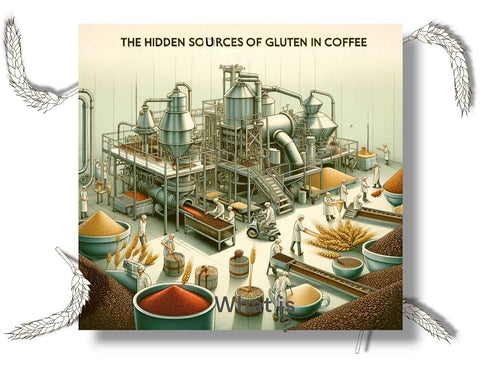
While coffee itself is gluten-free, the way it is processed and served can introduce gluten into your cup. One of the potential sources of gluten in coffee is cross-contamination during production, a concern supported by findings in a study on food safety and cross-contamination published in the National Institute of Health (NIH) PubMed Library [3]. Coffee beans are often processed in facilities that also handle grains containing gluten, which increases the risk of contamination. Additionally, flavored coffees, such as those with added syrups or spices, may contain gluten-containing ingredients.
Cross-Reactivity Concerns
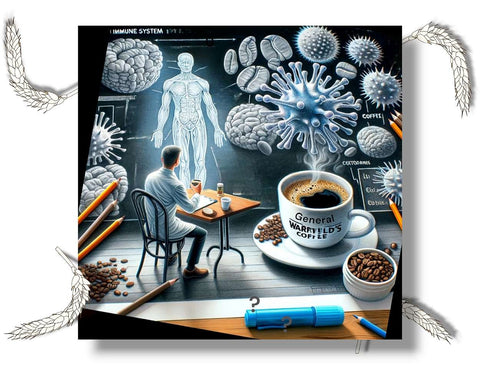
An emerging concern for those with celiac disease and non-celiac gluten sensitivity is the concept of cross-reactivity, particularly in relation to coffee consumption. Cross-reactivity occurs when the immune system mistakes the proteins in one substance (like coffee) for gluten proteins, leading to an immune response as if the individual had consumed gluten. While scientific studies, such as those reviewed by the National Institutes of Health (NIH), on this phenomenon are limited and the evidence is not conclusive, some individuals report experiencing symptoms of gluten exposure after consuming coffee.
The theory suggests that certain proteins in coffee could be structurally similar to gluten proteins, triggering this response. However, it's important to note that current research does not definitively support widespread cross-reactivity between coffee and gluten. Individuals concerned about potential reactions should consult with healthcare professionals to tailor their diet to their specific health needs, possibly considering an elimination diet to pinpoint the cause of their symptoms.
For those looking to minimize any risk, opting for pure, unflavored coffee and ensuring that the coffee-making equipment is free from gluten contamination are practical steps. Additionally, engaging with a dietitian or a healthcare provider knowledgeable about celiac disease can provide personalized advice and guidance.
Testimonial from a Satisfied Customer
I’ve tried several gluten-free coffee brands, but none compare to the rich taste and aroma of General Warfield’s Coffee. It’s the only coffee that doesn’t trigger my gluten sensitivity, and it’s become an essential part of my morning ritual.
Gluten-Free Coffee Brands and Options

For coffee lovers with celiac disease, finding the best gluten-free coffee brands for celiacs is crucial for ensuring their health and enjoyment. Fortunately, the market today offers a variety of gluten-free coffee brands, catering to the diverse preferences and needs of individuals with gluten sensitivities. While several brands take extra precautions to ensure their coffee is free from gluten contamination, General Warfield’s Coffee® also stands out for its commitment to quality and flavor.
To assist you in navigating the wide array of options, it’s beneficial to know what criteria to look for in a gluten-free coffee. Beyond seeking brands that explicitly state their products are gluten-free or certified gluten-free, consider the transparency of their sourcing and processing practices. A commitment to preventing cross-contamination and ensuring the purity of the coffee at every stage of production is paramount. This guidance is not exclusive to General Warfield’s Coffee®; it is applicable across many specialty grade brands. By sharing this information, we underscore our dedication to your health and satisfaction, reaffirming that while we strive to be your top choice, your well-being is our primary concern.
Acknowledging the wide array of gluten-free options available, we pride ourselves on setting a new standard for what coffee lovers can expect. Unlike many gluten-free coffees that compromise flavor for safety, General Warfield’s Coffee refuses to accept such compromises. Our innovative roasting technique not only guarantees a gluten-free cup but also enhances the coffee's natural aromas and flavors. This dedication to excellence ensures that choosing General Warfield’s Coffee is not about settling for a limited option but about choosing the best in a broad market of gluten-free products.
When shopping for coffee, look for options that are labeled as "gluten-free or certified gluten-free," to guarantee they meet the strictest standards. Also, consider trying single-origin coffees and specialty blends from reputable brands that share a dedication to quality and safety.
How to Make Your Own Gluten-Free Coffee at Home
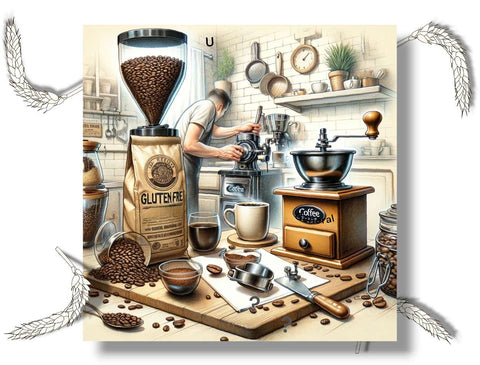
If you prefer to make your own coffee at home, there are several steps you can take to ensure that it is gluten-free. Start by choosing whole bean coffee that is labeled as gluten-free or certified gluten-free. This reduces the risk of cross-contamination during processing. Then, grind the coffee beans yourself to avoid any potential sources of gluten. Finally, make sure your coffee-making equipment, such as your grinder and coffee maker, are thoroughly cleaned and free from any gluten residue.
Brewing the perfect cup of coffee at home doesn't have to be complicated, even when ensuring it's gluten-free. Here are some gluten-free coffee brewing tips to help you enjoy your caffeine fix safely.
Helpful Tips:
1. Start with the Right Beans:
Select specialty-grade whole bean coffee that is gluten-free or carries a certified gluten-free seal. Choose brands that are reputable, trustworthy, and transparent. General Warfield's Coffee provides a variety of options that meet these criteria and are artisan-roasted for optimal flavor and purity.
2. Keep It Clean:
Make sure your coffee-making equipment, such as grinders and coffee makers, is thoroughly cleaned to avoid any gluten cross-contamination. This is especially important if the equipment is used to prepare other food or beverages that may contain gluten.
3. Brewing Method Matters:
Different brewing methods can highlight unique flavors and qualities of your coffee. Experiment with pour-over, French press, or a simple drip coffee maker to find your favorite method. General Warfield’s provides specific brewing guides for each of our blends to help you achieve the perfect cup every time.
Tips for Ordering Gluten-Free Coffee at Cafes and Coffee Shops

When ordering coffee at cafes or coffee shops, it's important to communicate your gluten-free needs clearly. Start by asking if they have any gluten-free coffee options available. If they do, inquire about their preparation methods to ensure there is no risk of cross-contamination. If gluten-free options are not available, consider ordering a black coffee or a plain latte made with dairy milk. Avoid flavored syrups and toppings, as they may contain gluten.
What Are Good Gluten-Free Coffee Alternatives?

If you’re looking to switch things up or take a break from coffee, there are many gluten-free beverage alternatives that deliver comfort, flavor, and even health benefits—without compromising your gluten-free lifestyle. Whether you have celiac disease, non-celiac gluten sensitivity, or simply want variety, these options are safe, satisfying, and naturally gluten-free.
🌿 1. Herbal Teas
Naturally free of gluten, herbal teas are caffeine-free infusions made from dried flowers, leaves, and roots rather than tea leaves. They provide comfort, relaxation, and potential health benefits without stimulating the nervous system.
- Chamomile Tea – Calming and aromatic, chamomile promotes relaxation, supports sleep, and may ease digestive discomfort.
- Peppermint Tea – Invigorating and refreshing, it helps with bloating, gas, and post-meal digestion.
- Ginger Tea – Zesty and warming, ginger aids digestion, supports the immune system, and may help with nausea or inflammation.
- Rooibos Tea – A naturally sweet, caffeine-free option rich in antioxidants and gentle on the stomach.
💡 Tip: Always confirm that any pre-packaged herbal teas are labeled “gluten-free,” as some flavored blends may contain additives processed in facilities that handle gluten.
🍵 2. Matcha Green Tea
Matcha, a finely ground powder made from shade-grown green tea leaves, is an excellent gluten-free alternative that offers an energy boost without overstimulating the body.
- Sustained Energy: Matcha contains natural caffeine balanced by L-theanine, promoting calm focus instead of jittery energy.
- Antioxidant Powerhouse: Rich in catechins, especially EGCG (epigallocatechin gallate), which may support immune health and reduce oxidative stress.
- Versatile Preparation: Enjoy it traditionally whisked with hot water or blended into smoothies, lattes, or chilled matcha beverages.
- Natural Detox Support: Chlorophyll-rich leaves help promote gentle detoxification and overall well-being.
💡 For those with celiac disease, ensure your matcha is sourced from certified gluten-free producers and not cross-contaminated during processing.
☕ 3. Other Gluten-Free Beverage Options
If you prefer a break from coffee but still want a warm, flavorful drink, consider these gluten-free choices:
- Golden Milk (Turmeric Latte): A creamy, spiced beverage made with turmeric, cinnamon, and dairy or plant-based milk — anti-inflammatory and caffeine-free.
- Chicory Root Coffee: A roasted root drink that mimics coffee’s earthy flavor without caffeine or gluten.
- Yerba Mate: A South American herb infusion rich in vitamins and antioxidants that offers smooth, sustained energy.
- Dandelion Root Tea: Slightly bitter and coffee-like in flavor, this herbal tea supports liver health and digestion.
🌸 In Summary
Gluten-free coffee alternatives such as herbal teas, matcha, and chicory-based drinks give you options for every mood and occasion. They can soothe, energize, and support well-being — all without gluten.
Still, when it comes to enjoying the rich complexity, aroma, and satisfaction that only true coffee delivers, few alternatives can compare. That’s why General Warfield’s Coffee® remains the perfect choice for celiacs and those with gluten sensitivities — a pure, low-acid, specialty-grade coffee that’s naturally gluten-free and artisan roasted for uncompromised quality.
The Benefits of Drinking Gluten-Free Coffee for Celiacs

For individuals with celiac disease or gluten sensitivity, choosing a truly gluten-free coffee isn’t just a preference—it’s a key part of maintaining health and quality of life. Beyond avoiding unpleasant symptoms, gluten-free coffee offers benefits that extend to both the body and the mind.
🌿 1. Reduces the Risk of Inflammation and Digestive Distress
Even trace amounts of gluten can trigger an immune response in people with celiac disease. A pure, gluten-free coffee ensures:
- No hidden gluten proteins that could inflame the gut or cause discomfort.
- Improved digestion and nutrient absorption by reducing intestinal irritation.
- A calmer stomach and fewer post-coffee reactions such as bloating or fatigue.
💡 Since General Warfield’s Coffee® is produced in an FDA-registered facility that strictly follows cGMP standards, you can sip your coffee confidently knowing cross-contamination is extremely unlikely.
💪 2. Supports Better Nutrient Absorption
When the intestines are free from inflammation, they can more effectively absorb essential nutrients such as iron, calcium, and B vitamins—nutrients that are often compromised in people with celiac disease.
- A pure coffee experience contributes to overall gut balance and helps support recovery from prior gluten exposure.
- High-quality, low-acid coffee is easier on the digestive system and gentler for daily enjoyment.
☕ 3. Provides Peace of Mind and Daily Consistency
Knowing that your coffee is gluten-free transforms your morning routine from a moment of caution into one of comfort and enjoyment.
- You can focus on flavor, aroma, and ritual rather than anxiety about ingredients.
- Certified or naturally gluten-free brands, like General Warfield’s Coffee®, bring reassurance to every cup.
- Peace of mind enhances your overall relationship with food and drink, reducing stress and supporting emotional well-being.
🌎 4. Reflects Higher Quality and Ethical Standards
Gluten-free coffee is often made by brands that care deeply about sourcing, purity, and sustainability.
- Many such coffees are specialty grade, Fair-Trade, and USDA Organic certified.
- These certifications ensure environmentally responsible farming and fair treatment of growers.
- Choosing gluten-free options often means choosing better-quality beans and ethical practices—a win for your health and the planet.
❤️ 5. Enhances Your Coffee Experience Without Compromise
For coffee lovers, gluten-free doesn’t have to mean giving up flavor. In fact, the opposite is true.
- Specialty gluten-free coffees are roasted with precision to highlight the bean’s natural sweetness, brightness, and body.
- Low-acid, additive-free roasts (like those from General Warfield’s Coffee®) deliver a smooth, balanced cup without bitterness.
- You can enjoy exceptional taste and potential health benefits—together.
✨ In Summary
Drinking gluten-free coffee offers both scientific and sensory benefits for individuals with celiac disease or gluten sensitivity. It reduces inflammation risk, supports digestive health, and ensures a safe, satisfying coffee ritual every day.
With General Warfield’s Coffee®, you don’t just get a gluten-free guarantee—you get uncompromising quality, low acidity, and artisan roasting that turns every sip into a safe, flavorful experience.
Gluten-Free Coffee Recipes and Ideas

Exploring gluten-free coffee at home is easy and delicious. Start with pure, specialty-grade whole beans (like General Warfield’s Coffee®), then pair with naturally gluten-free ingredients—oat, almond, or coconut milk (check labels), real spices, honey or maple, and simple syrups made from scratch. Try different brewing methods (pour-over for clarity, French press for body, cold brew for smoothness) to highlight flavor while keeping your routine gluten-safe.
Gluten-Free Coffee Recipe Guide
Tap a recipe to expand. Each uses naturally gluten-free ingredients and pairs beautifully with General Warfield’s Coffee®.
1) Dairy-Free Oat Milk Latte (Hot or Iced)
A silky, naturally gluten-free latte with a gentle sweetness and creamy body.
Ingredients
- 18–20 g freshly ground General Warfield’s Coffee® (espresso or strong concentrate)
- 6–8 oz unsweetened oat milk (certified GF)
- 1–2 tsp maple syrup or honey (optional)
- Pinch cinnamon (optional)
Steps
- Pull a double espresso or brew 2–3 oz strong coffee (AeroPress/pour-over).
- Heat or steam oat milk to ~140–150°F (60–65°C); avoid boiling.
- Sweeten to taste, pour milk over coffee, finish with a pinch of cinnamon.
- For iced: chill coffee, pour over ice, add cold oat milk and sweetener.
2) Honey-Cinnamon Cold Brew (Ultra-Smooth)
Low-acid, mellow, and naturally sweet—perfect for sensitive stomachs.
Ingredients
- 1 cup (85–100 g) coarsely ground General Warfield’s Coffee®
- 4 cups (950 ml) cold, filtered water
- 1–2 tbsp honey (to taste)
- 1/4 tsp ground cinnamon or a cinnamon stick
Steps
- Combine coffee and water; stir. Steep 12–18 hours in the fridge.
- Strain through a fine filter. Sweeten with honey and add cinnamon.
- Serve over ice; dilute with water or milk to taste.
3) Maple-Vanilla Almond Latte
Comforting and aromatic with real maple and vanilla—no artificial syrups.
Ingredients
- 18–20 g coffee (espresso) or 3 oz strong brew
- 6–8 oz almond milk (check GF label)
- 1–2 tsp pure maple syrup
- 1/4 tsp pure vanilla extract
- Optional: pinch sea salt to balance sweetness
Steps
- Brew coffee. Warm/steam almond milk with maple and vanilla.
- Combine, taste, and adjust sweetness; add a small pinch of salt if desired.
4) DIY Gluten-Free Vanilla Simple Syrup
Clean, aromatic sweetener for any coffee—no additives, no thickeners.
Ingredients
- 1 cup water
- 1 cup organic cane sugar (or 3/4 cup for less sweet)
- 1 tsp pure vanilla extract (GF)
Steps
- Heat water and sugar, stirring until dissolved. Remove from heat.
- Stir in vanilla; cool. Store refrigerated in a clean bottle for 2–3 weeks.
Brew Tips for Sensitive Stomachs
- Prefer cold brew or medium-coarse pour-over for smoother extraction and lower perceived acidity.
- Use fresh, filtered water at 195–205°F (90–96°C) for hot brews; avoid scorching.
- Choose 100% Arabica, specialty-grade beans (like General Warfield’s Coffee®) for clean flavor and consistency.
☕ Coffee Glossary Highlights
Learn essential coffee terms—from Acidity to Single Origin—then explore our Glossary of 2,200+ Coffee Terms.
- Acidity: Pleasant brightness or liveliness in flavor (not pH). Specialty coffees like General Warfield’s balance acidity for clarity and sweetness.
- Body: The tactile weight or mouthfeel—light and tea-like to rich and creamy—shaped by origin, roast, and brew method.
- Cupping: A standardized tasting process used to evaluate aroma, flavor, aftertaste, acidity, and body—essential for roast profiling.
- Maillard Reaction: A heat-driven chemical reaction between amino acids and sugars that gives roasted coffee its brown color and rich, toasty aroma.
- Single Origin: Coffee from a specific farm, region, or cooperative—valued for traceability and unique flavor characteristics.
Gluten-Free Coffee: Frequently Asked Questions
Is coffee naturally gluten-free?
Do flavored coffees contain gluten?
What about cross-contamination during roasting and packaging?
Is decaf coffee gluten-free?
How should I clean brewing equipment to keep it gluten-free?
Are plant milks and syrups always gluten-free?
Is gluten-free coffee safer for people with non-celiac gluten sensitivity?
Do I need “gluten-free” on the label to trust the coffee?
Conclusion: Embrace the Purest Cup with General Warfield’s Coffee
As a coffee aficionado navigating a gluten-free lifestyle, you don't just deserve any coffee; you deserve the best—Choose General Warfield’s Coffee. Our dedication to quality and purity sets us apart in a sea of options. With every bean meticulously selected and artisan-roasted in our award-winning, FDA-approved facility, we promise a cup that’s not only safe for those with celiac disease but unparalleled in taste and quality.
In a world where choices abound, General Warfield’s Coffee emerges not just as another option but as the premier choice for those who value both their health and their coffee experience. Our selection process, artisan roasting techniques, and rigorous quality control measures are designed to meet the needs of individuals with celiac disease or gluten sensitivity without sacrificing taste or quality.
While we celebrate the variety of gluten-free coffee options available today, we invite discerning coffee lovers to experience the unmatched purity and flavor that General Warfield’s Coffee offers. Join us in embracing a cup of coffee that stands tall among many, assured that with every sip, you’re enjoying not just any coffee, but the culmination of dedication to excellence and a commitment to the gluten-free community.
References
- Celiac Disease Foundation – What is Celiac Disease?
- Mayo Clinic – Celiac Disease: Symptoms and Causes
- Nutrients. 2021 Jul; 13(7): 2244. Published online 2021 Jun 29. doi: 10.3390/nu13072244 | PMID: 34210037
Disclaimer: This article is for informational and educational purposes only and should not be considered medical advice. Individuals with celiac disease or gluten sensitivity should consult a qualified healthcare professional before making dietary changes. General Warfield’s Coffee® does not make medical claims and encourages readers to verify all information with trusted health sources.
This page was last updated on by General Warfield’s Coffee®.

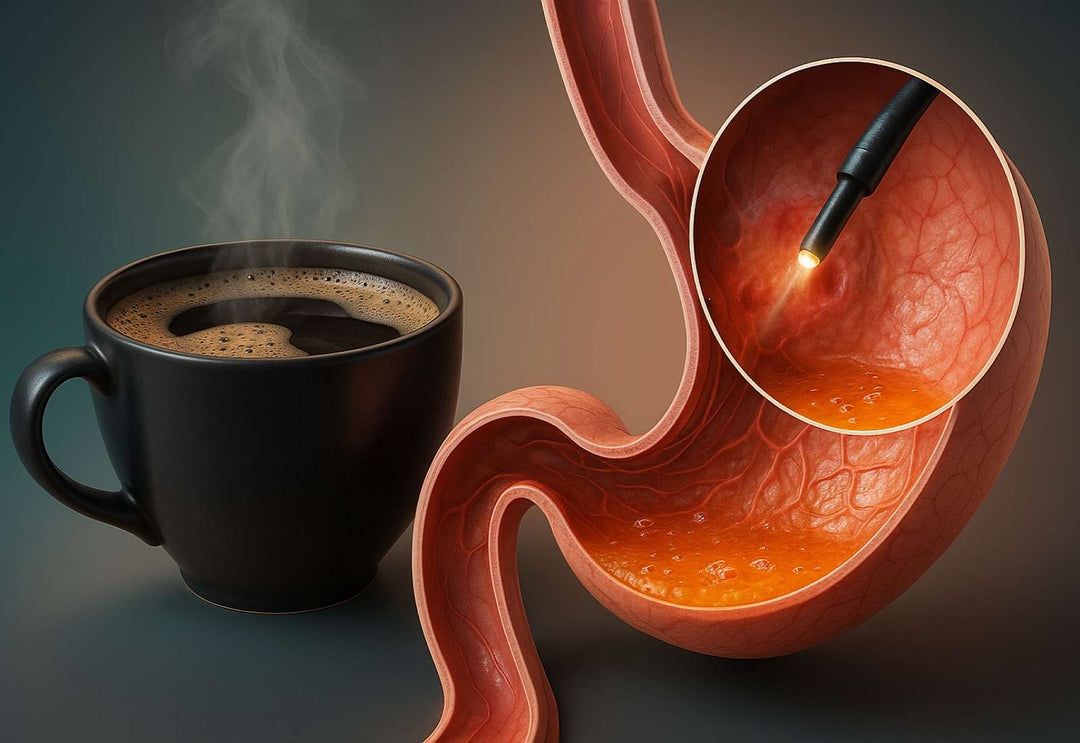


Leave a comment